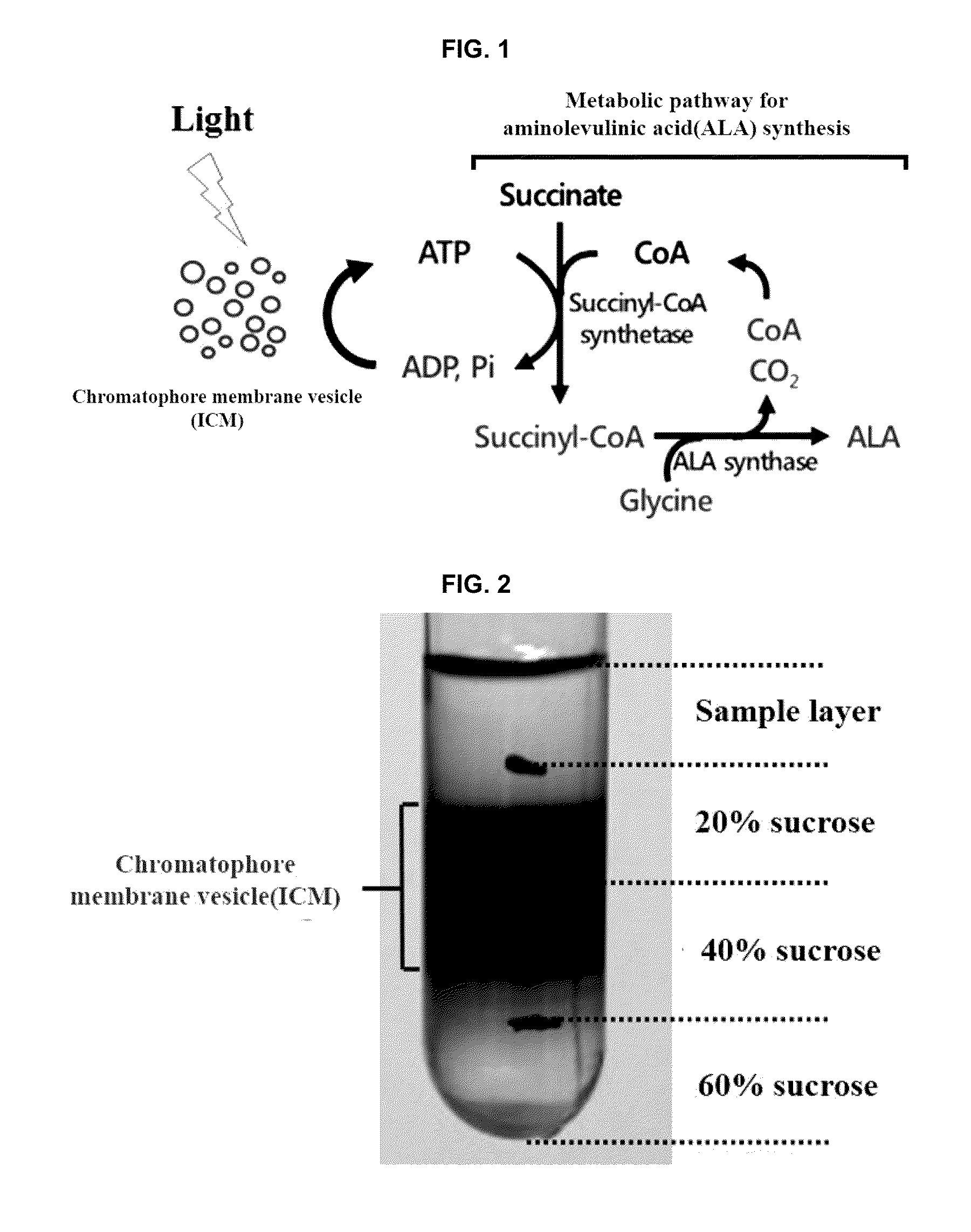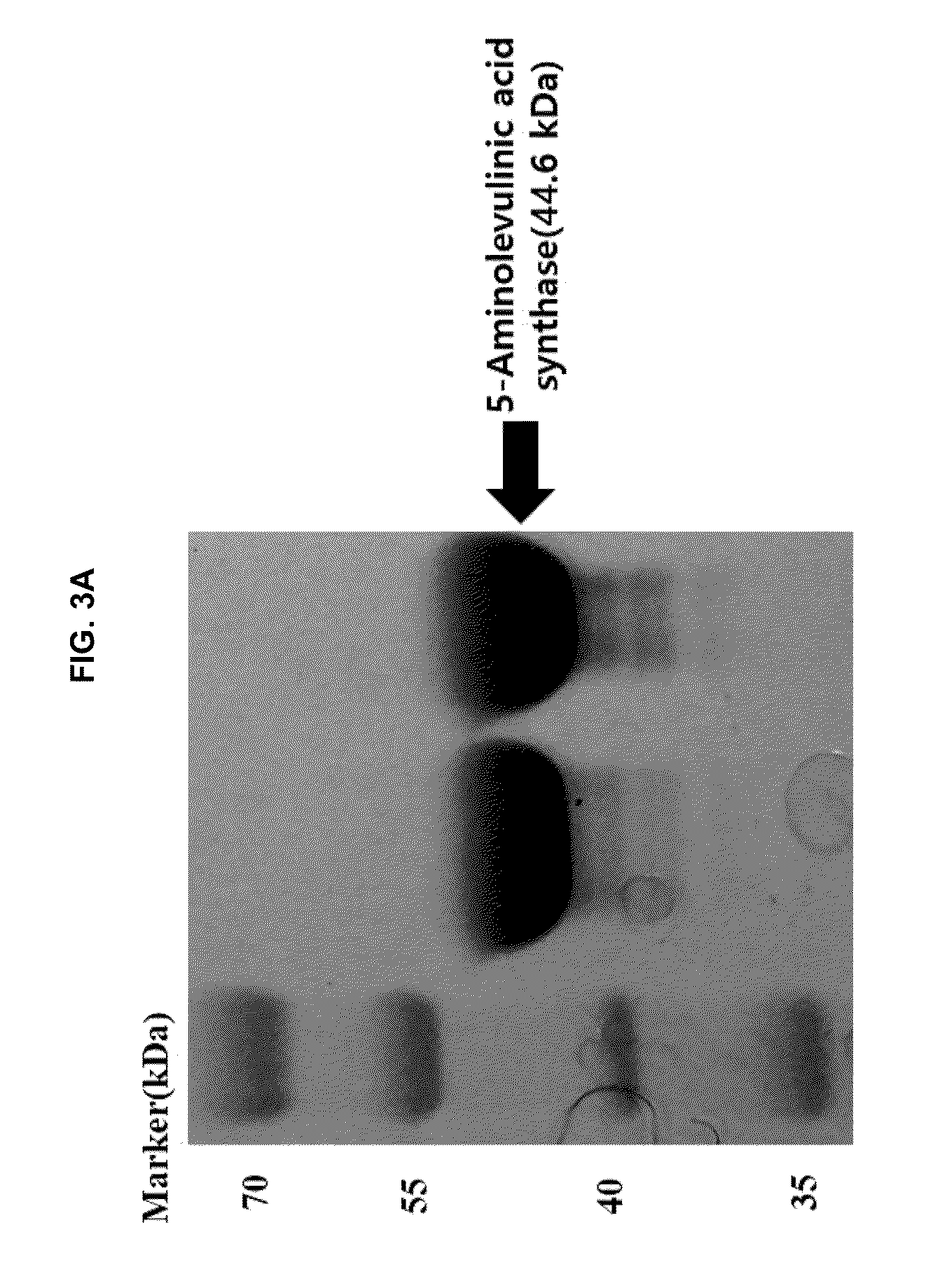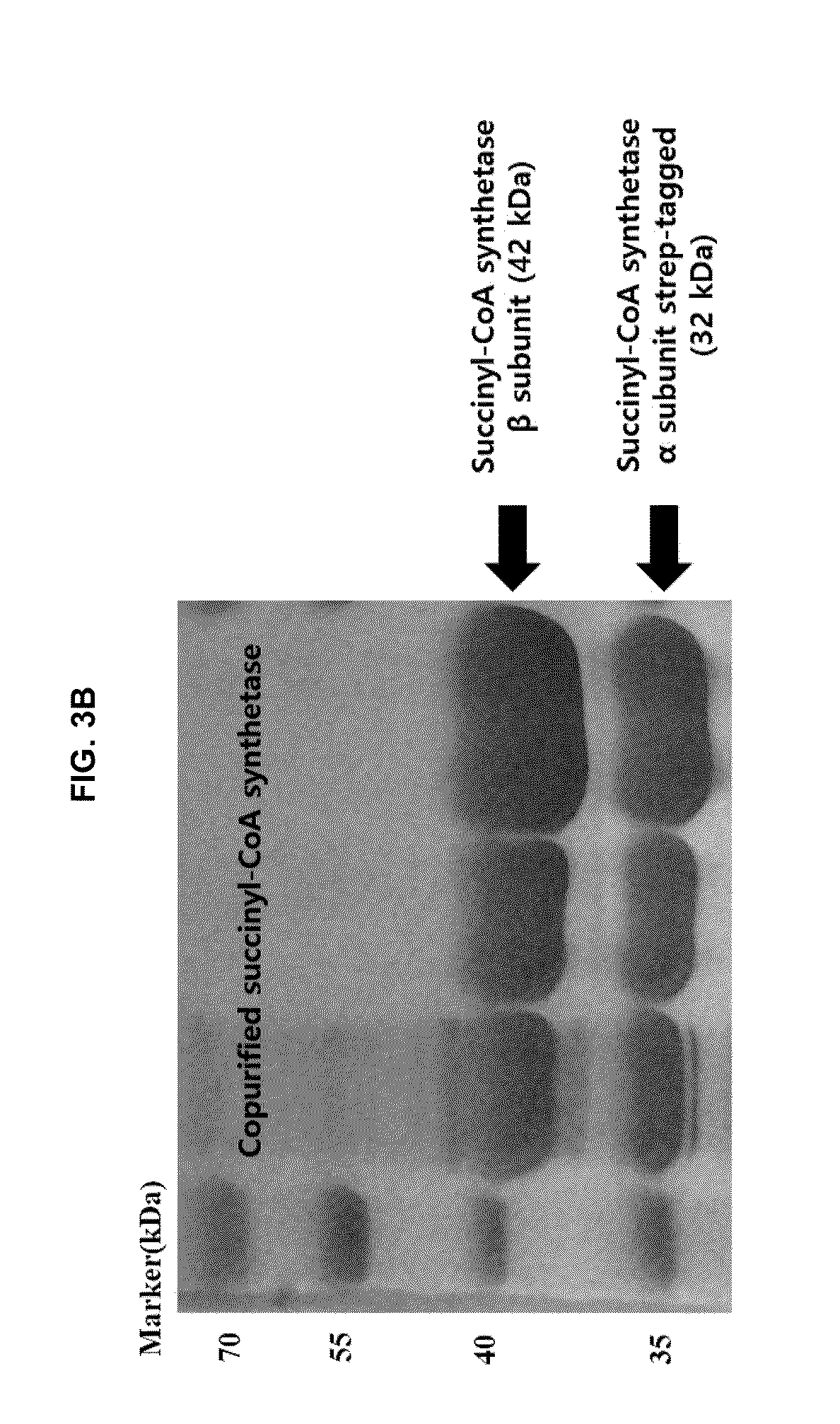Continuous production method for 5-aminolevulinic acid by using photosynthetic membrane vesicle
a technology of photosynthetic membrane and production method, which is applied in the direction of enzymology, ligases, transferases, etc., can solve the problems of complex and cost ineffective coenzyme reactions, no industrial application of chromatophore membrane itself, and ineffective use of chromatophore membrane, etc., to achieve simple structure
- Summary
- Abstract
- Description
- Claims
- Application Information
AI Technical Summary
Benefits of technology
Problems solved by technology
Method used
Image
Examples
example 1
Separating Chromatophore Membrane Vesicle
[0062]In the present experiment, Rhodobacter sphearoides (2.4.1, ATCC BAA-808, Cohen-Bazire et al. 1956. J. Cell. Comp. Physiol. 49: 25-68), which is purple nonsulfur bacterium, was used to prepare the chromatophore membrane vesicle. For the growth of Rhodobacter sphaeroides, a Sistrom minimal medium (1962. J. Gen. Microbiol. 28: 607-616) was used, and a composition thereof is shown in Table 1. First, Rhodobacter sphaeroides strain was inoculated into a test tube containing 5 ml and of Sistrom medium, and then, incubated at 30° C. with shaking at a rotation speed of 250 rpm. When the cell absorbance reached 1.0 at wavelength of 660 nm, 18 ml and screw-cap test tube was inoculated with the strain to have the absorbance of 0.05 at 660 nm. The screw-cap test tube was completely filled with medium not to allow the air to permeate thereinto, followed by closing with screw cap. The resulting test tube was incubated anaerobically at 30° C. for 18 ho...
example 2
Obtaining Genes Coding Enzymes Constituting 5-Aminolevulinic Acid Synthetic Pathway
[0063]In order to purify succinyl-CoA synthetase and 5-aminolevulinic acid synthase (ALA synthase) constituting a 5-aminolevulinic acid synthetic pathway, genes coding for these two enzymes were cloned in Escherichia coli. The gene coding for succinyl-CoA synthetase was amplified by polymerase chain reaction with chromosomal DNA of Escherichia coli (str. K-12 substr. MG1655) as a template, and a forward primer set forth in SEQ ID NO: 1 and a reverse primer set forth in SEQ ID NO: 2 (Table 2). At the same time, to clone the gene into an expression vector pASK-IBA3plus(IBA), recognition sequence for restriction enzyme Bsa I and an additional sequence guided by a manufacturer (IBA) were inserted at both termini of the gene. Also, to put a Strep-tag to the C-terminus of the gene, the original stop codon of the gene was removed. The gene obtained by the polymerase chain reaction was cloned into pASK-IBA3pl...
example 3
Purification of Enzymes Constituting 5-Aminolevulinic Acid Synthetic Pathway
[0065]Escherichia coli BL21(DE3) was transformed with the plasmid vectors for the expression of succinyl-CoA synthetase and the 5-aminolevulinic acid synthase, which were prepared according to Example 2. For purification of the enzymes, a transformed strain was inoculated into a 5 ml and of LB (Luria-Bertani) medium in test culture tube, and then, incubated at 37° C. with shaking at 250 rpm for 12 hours. Ampicillin, which is a marker for the expression vector, was added at 50 μg / ml to keep the expression vector in cell. Then, the growing culture was inoculated into a 300 ml and LB medium containing ampicillin at 50 μg / ml in 1 L flask to have the absorbance of 0.05 at 600 nm. Then the cells were cultured at 37° C. with shaking at 250 rpm until the culture absorbance reached 0.4, followed by the addition of anhydrotetracycline at 0.2 μg / ml to induce expression of the enzymes. Cells were cultured with shaking a...
PUM
| Property | Measurement | Unit |
|---|---|---|
| temperature | aaaaa | aaaaa |
| pH | aaaaa | aaaaa |
| temperature | aaaaa | aaaaa |
Abstract
Description
Claims
Application Information
 Login to View More
Login to View More - R&D
- Intellectual Property
- Life Sciences
- Materials
- Tech Scout
- Unparalleled Data Quality
- Higher Quality Content
- 60% Fewer Hallucinations
Browse by: Latest US Patents, China's latest patents, Technical Efficacy Thesaurus, Application Domain, Technology Topic, Popular Technical Reports.
© 2025 PatSnap. All rights reserved.Legal|Privacy policy|Modern Slavery Act Transparency Statement|Sitemap|About US| Contact US: help@patsnap.com



